Tying the Surgical Constrictor Knot Around Forceps
Place an artery forceps across the vessel opposite the long end of the ligature. Pass the short end around the vessel to one side and then across the forceps and around the vessel to the other side. Pass the short end across the long one, grip it with the forceps, pull the knot tight, and cut the ends.
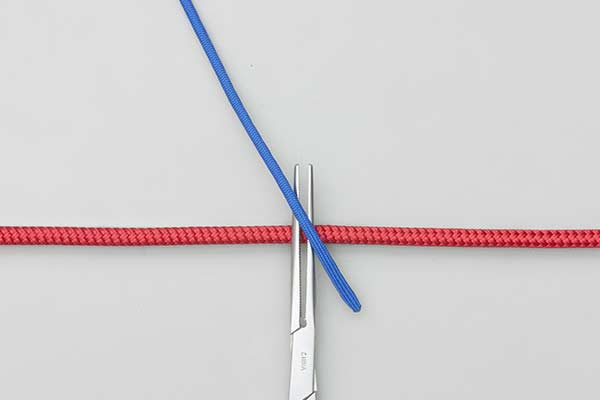
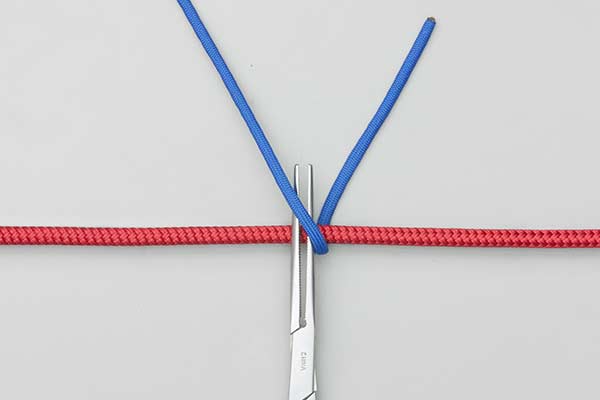

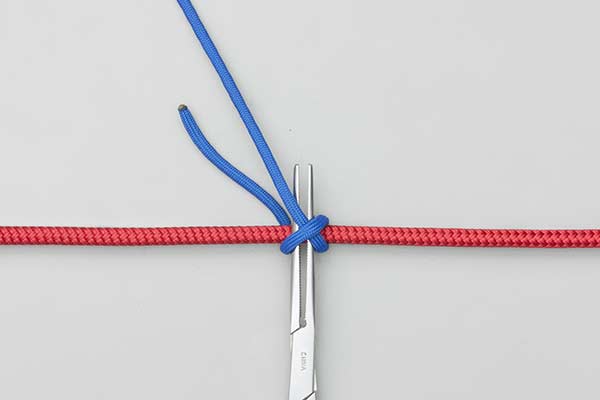
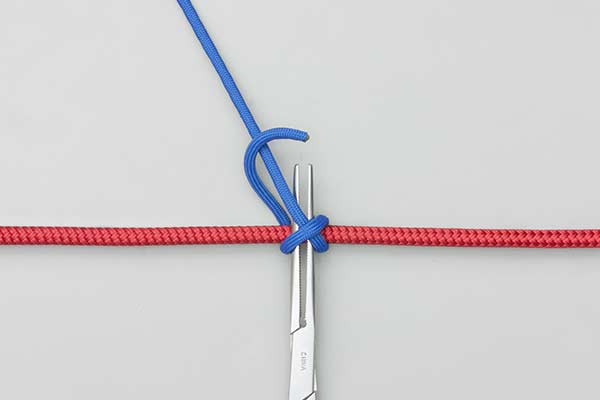
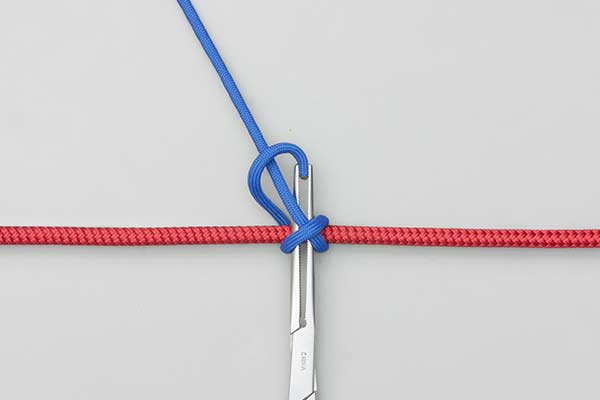
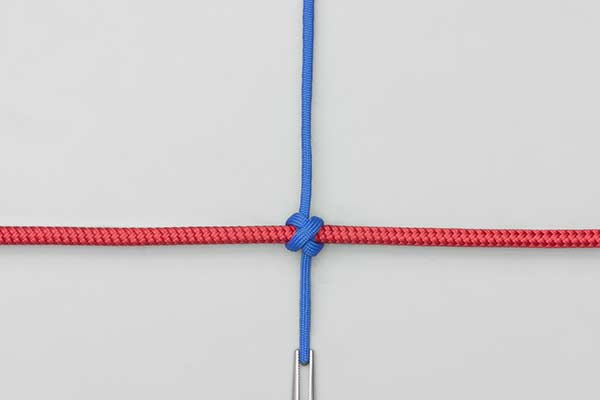
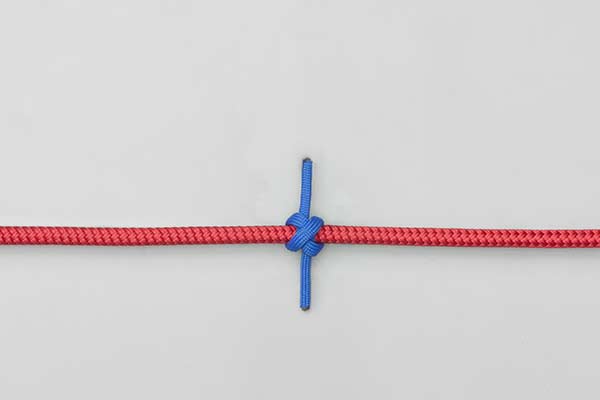
Surgical Constrictor Knot Tied Around Forceps
Uses: The Constrictor Knot (ABOK # 1188, p 216.) is uniquely suitable for use as a surgical ligature: it has superior binding properties, tightening smoothly and holding tight. Tying the Knot around the forceps is one way to facilitate tying it.
Options: Four ways of tying it in surgery are compared: Howard Instrument Tie; Retrieving the End; Tied Around the Forceps; and, Sliding the Constrictor Down the Forceps.
Research on the Constrictor Knot: Howard Taylor, a veterinary surgeon in Salisbury, England pioneered the use of the Constrictor knot to ligate the uterine pedicle in a canine hysterectomy and prefers his Instrument Technique. For our research we used a modification of his test bench to confirm that the Constrictor is the most secure ligature by a large margin because of its ability to stay tight1. Our paper has generated interest and, as a result, the Royal College of Surgeons has kindly made it Available On Line.
Disadvantages: The Constrictor requires two passes around the vessel or pedicle and the knot itself requires learning. This particular technique requires holding the forceps in position while passing the two turns around the vessel.
Advantages: The additional pass around the vessel enhances the constriction effect. In contrast to the double throw of the Surgical Half knot, the Constrictor tightens more readily and is less prone to slip. This technique does show the layout of the constrictor.
Undoing it: Undoing a ligature is not anticipated – which is fortunate because the knot can be very hard to undo - cutting the knot is often the only option. If this were necessary, the binding strand should be cut over the other constrictor strands to protect underlying tissue.
Reference: 1 Taylor H, Grogono AW. The constrictor knot is the best ligature. Ann R Coll Surg Engl. 2014 (96): 101-105.

